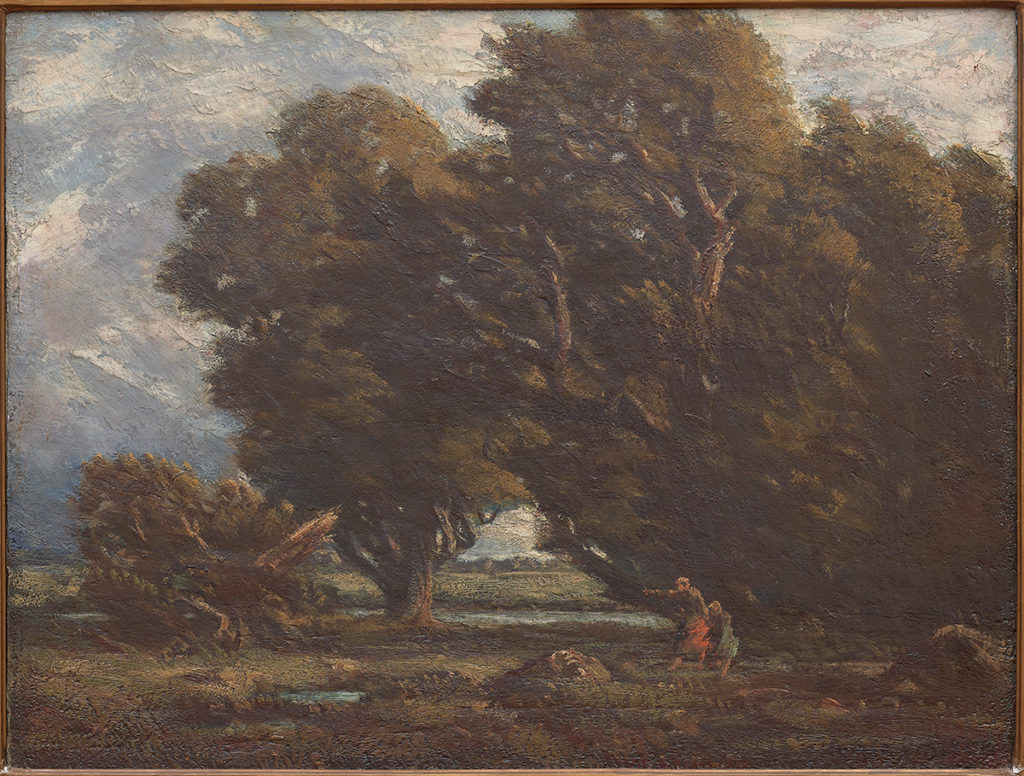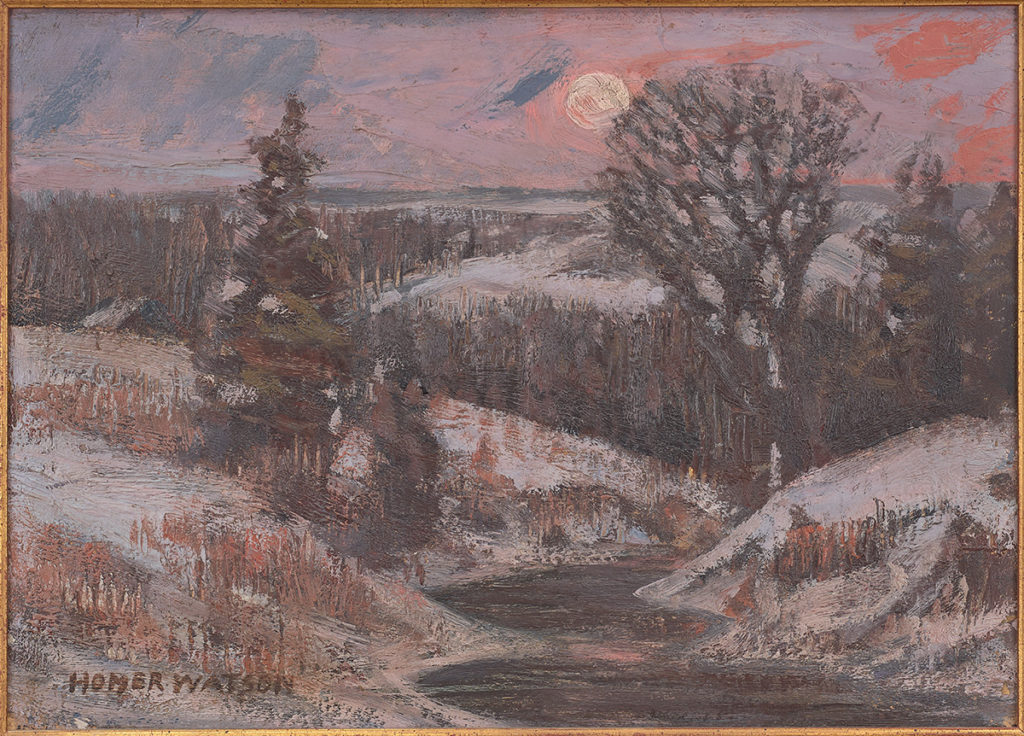Homer's Painting Style and Technique
Homer Watson’s artwork is considered to have three distinct periods – early, middle, and late. His early period, ranging from his first paintings until around 1890, is very traditional and meticulous. In his own words, Homer noted that his “early drawings are done in the lines of observing as closely as an engraver would.”[1] Ross Hamilton describes them as being most comparable to the European Barbizon style and the work of John Constable.[2] Oscar Wilde made a similar comparison during his travels in Canada, dubbing the artist as the “Canadian Constable”. [3] However, Homer did not necessarily agree with the connection drawn between himself and these European artists, and wrote about it in a letter to Group of Seven member Arthur Lismer:
I have had some knocks as to me being a follower of Constable. I never was this, not to my knowledge excepting once. After I saw the “Lock” of Constable, I said, “Hang it, I will paint a subject Constable would have delighted to paint, and that is my grandfather’s Mill Pond”, so that the “Flood Gate” went into being. This is a deliberate trying to get the spirit of Constable into Canada. Just some fun for me in a way for calling me a follower of Constable. I thought let ‘em have it, for I felt in my heart that I need follow no man.[4]
Then from the 1890s to around 1915 is his middle period, considered to be some of his most active and successful years in terms of exhibitions and sales. Biographer Muriel Miller attributes five things to his increasing success during this time as Homer got better at achieving his artistic goals: fresh individuality, atmospheric luminosity, thematic unity between the idealistic and realistic, bold composition, and strong perspective.[5] His brushstrokes were thicker, departing from the “somewhat photographic realism of the nineteenth century”[6] and had a new sense of “freedom in the artist’s expression”.[7]
His last artistic period is from around 1915 until his death in 1936. He continued to use thick brushstrokes, with a “heavier impasto and a technique that savours of impressionism.”[8] This period also saw smaller sized artworks, less touchups, quick painting application, and the more usage of unique colour combinations like pinks and purples.[9]
However, though his late period paintings are often described as “impressionistic,” Homer himself did not describe his style as such. He even expressed concern over how impressionists’ focus on light and air only could lead to the elimination of other important elements of nature.[10]
The influence of spiritualism was also particularly strong on his art during this time, with more attention paid to the atmosphere of scenes and liminal times of day. Homer saw “the ephemeral moment as a catalyst for spiritual thought”[11], with the simplification and impasto eliciting “a tactile sensory response from the viewer – one that would bespeak the material world and consequently the spiritual elements that he felt were present within it.”[12]
[1] Letter from Homer Watson to Harold Mortimer Lamb, 1909 March 29, Homer Watson House & Gallery Archives, Kitchener
[2] Ross Hamilton, foreword to Homer Watson Artist and Man, (Kitchener: Commercial Printing Company, 1939), vi
[3] Kevin O’Brien, Oscar Wilde in Canada: An Apostle of the Arts, (Toronto: Personal Library Publishers, 1982) 103
[4] Letter from Homer Watson to Arthur Lismer, c.1930 September 30, Homer Watson fonds, National Gallery of Canada Library and Archives, Ottawa, in J. Russell Harper, Homer Watson, a Painter of Rural Ontario, (Ottawa: National Gallery of Canada, 1963), 33
[5] Muriel Miller, Homer Watson, The Man of Doon, 2nd ed., (Toronto: Summerhill Press, 1988), 79-80
[6] Hamilton, foreword to Homer Watson Artist and Man, vi-vii
[7] Ibid.
[8] Hamilton, foreword to Homer Watson Artist and Man, vii
[9] Brian Foss, Homer Watson: Life & Work (Toronto: Art Canada Institute, 2018)
[10] Shannon Bingeman, “Eventide along the Grand: Homer Watson’s Mystical Landscape”, (Master’s thesis, Carleton University, Ottawa, 2013), 45-46
[11] Ibid., 18
[12] Ibid., 82-83



